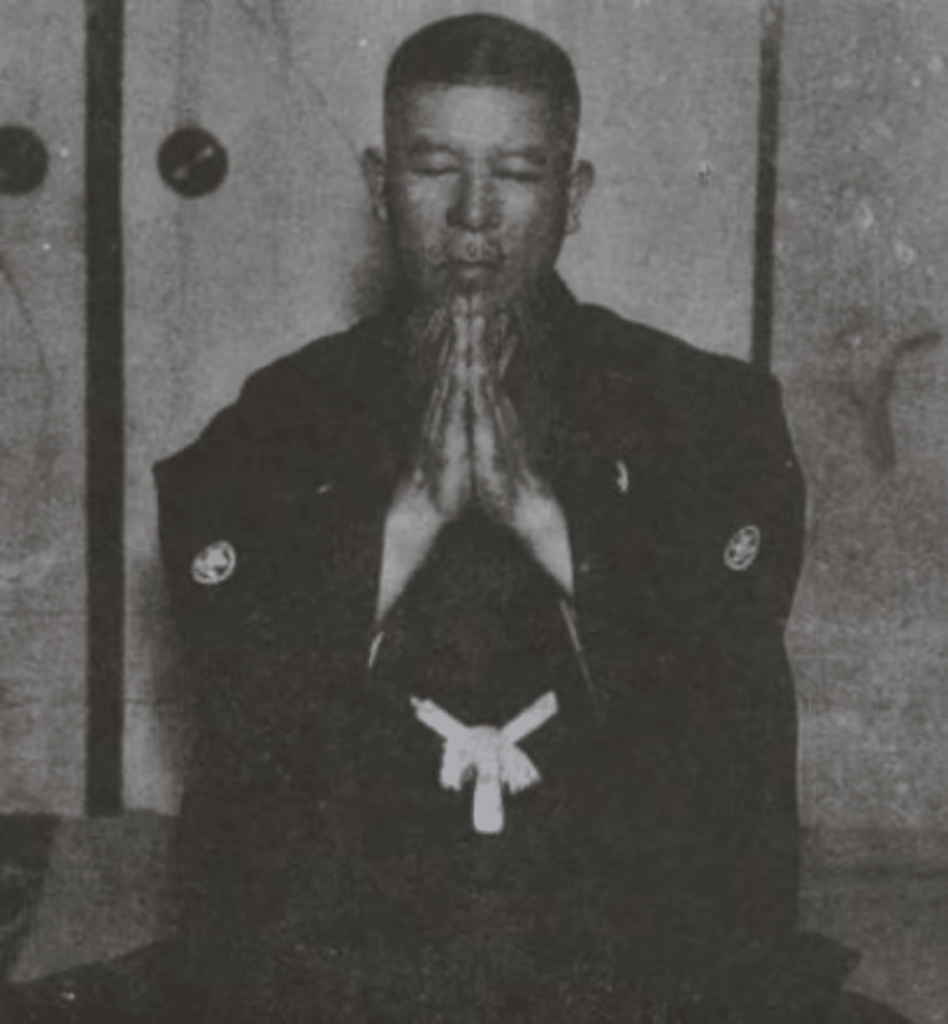Today, a significant attraction for many Reiki practitioners is the system’s Japanese origins, and it’s easy to see why. Look at how romantic and evocative a classical name of Japan is, “kototama no sakiwau kuni” – “the land where the mysterious workings of language bring bliss“. I love words, and the idea that language in my spiritual practice could bring me bliss is, and was, irresistible. But where to find this in the system of Reiki?
While researching for “The Reiki Sourcebook,” I came across a fascinating, yet rarely discussed or practiced, aspect of Mikao Usui’s teachings: the integration of Emperor Meiji’s waka (lit. Japanese poems or songs with a 5-7-5-7-7 meter). At the time, I wasn’t sure how to approach something culturally specific, let alone understand its benefits within Reiki practice. Initially written in pre-1940s Japanese, spiritual in nature, highly metaphoric, and often culturally and socially specific, this element of Usui’s system seemed to resist easy categorization or translation into modern Western contexts.
Several waka were translated into English from the Reiki Ryoho Hikkei, the Japanese Reiki Association’s manual. Their quality, however, often made it difficult for many to connect with the poems’ depths; until recently, that is.
Many years ago, the Meiji Shrine in Tokyo commissioned American Harold Wright (now 92) to create quality English translations of Emperor Meiji waka. In 2024, the Meiji Shrine published two comprehensive collections by Wright containing translated waka from Emperor Meiji and Empress Shōken. These excellent translations serve as cultural bridges, allowing everyone, especially Reiki practitioners, access to their embedded contemplative wisdom, just as Usui intended.
Why Poetry as a Spiritual Tool?
Our minds are naturally active and analytical, and contemplating spiritual poetry can be the medicine they need. Remember, the first step of any meditation practice is to learn to focus, allowing the mind to quieten and expand. The paradoxes or juxtapositions inside these short poems, not unlike Zen koans, cannot be resolved through logical thinking alone. They create openings for intuitive understanding as we learn about ourselves and our practice through their spiritual nature. When working with waka, we engage with language on multiple levels:
- The surface meaning of the words themselves
- The more profound subtexts and cultural resonances
- The personal connections to our own lives and Reiki practice.
The Integrated Practice
The significance of waka in Reiki practice became more apparent when I examined the 1933 writings of Tomita Kaiji, a direct student of Usui. Tomita describes a form of Reiki meditation practice, hatsurei hō, that beautifully engages the three “diamonds” of our being, bringing about a state of wholeness:
- The physical body (through our hands in gassho)
- The mind (through contemplation of the waka)
- The breath (connecting mind and body at the hara)
- Integrating all three diamonds with hands-on healing at the end of the practice.
This approach to the system of Reiki offers a unique solution for Reiki practitioners who sometimes struggle with quieting the mind during meditation. Rather than fighting against our analytical nature, waka contemplation provides a structured focus that gradually leads us deeper into stillness and self-awareness.

Hatsurei Hō, the Practice
I would love to introduce you to a simplified practice of the use of waka in Reiki as taught by Tomita (not included are extra mudras (hand positions) and detailed hand sensitivity techniques).
- Sit in a comfortable position with hands in gassho.
- Breathe into the hara, your core at your deep belly (continue throughout the practice).
- Read an Emperor Meiji waka slowly three times and contemplate its meanings and resonances.
“Though overgrown
With a dense thicket
Of briers and brambles,
A path needing tread upon is One that must be followed.”
Contemplation
- What does the ‘dense thicket of briers and brambles’ symbolize in your life? Reflect on the obstacles or difficulties you face on your personal journey.
- How do you interpret the idea of a path ‘needing tread upon’? Consider the notion of destiny or necessary challenges that must be faced for growth.
- In what ways have you navigated through your own ‘dense thickets’ in life? Think about how you have dealt with difficult or challenging situations.
- What strategies or qualities do you find most helpful when following a challenging path? Explore the attitudes, skills, or practices that assist you in overcoming obstacles.
- How does this poem resonate with your practice of Reiki or meditation? Consider how the themes of the poem align with the Reiki Precepts and your personal experiences.
- What lessons about perseverance and resilience can be drawn from this poem? Reflect on the importance of continuing on one’s path, despite difficulties.
- How might this poem inspire you to approach future challenges on your path? Consider how this metaphor can influence your mindset and actions when facing future obstacles.
- Bring your hands to your body for hands-on healing.
Kaiji Tomita states that after practicing this for 5 days, the practitioner begins to feel reiha, a wave of energy moving through the entire body. This is your Japanese Reiki practice.
Let me know how you go!
Article by Bronwen Logan

Bronwen Logan is a Reiki Teacher, Meditation Instructor, Podcaster, Author, Founder of Reiki with Bronwen & Co-founder of the International House of Reiki
International Reiki teacher, meditation instructor, podcaster, and Reiki author, Bronwen Logan, is devoted to empowering individuals through meditation, spiritual teachings, and professional development. As the founder of Reiki with Bronwen, she guides students towards a heightened sense of wholeness in everyday life.
As a co-founder of the International House of Reiki and Shibumi International Reiki Association, Bronwen (under the name Bronwen Stiene) has co-authored acclaimed books like The Reiki Sourcebook and The Japanese Art of Reiki. Additionally, she has created numerous web classes, written hundreds of blogs, and developed educational materials for students of all levels. Bronwen is also the voice behind many Reiki audiobooks and meditations and is an originating member of Reiki Women Podcasts.
Since 1998, Bronwen has played a significant role in revitalizing the Japanese practice of Reiki, learning from diverse teachers, both Western and Japanese, to enhance her Reiki skills and understanding. Based on research into traditional Japanese practices, she has played a major role in identifying foundational Reiki teachings, such as The Three Diamonds and the Five Elements of the System of Reiki. With a passion for healing and animals, Bronwen offers Reiki classes and treatments for humans and animals at Tomah Retreat in Australia and coaches the system worldwide in-person and online.
Website: reikiwithbronwen.com
Email: [email protected]